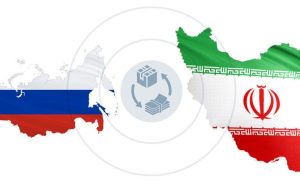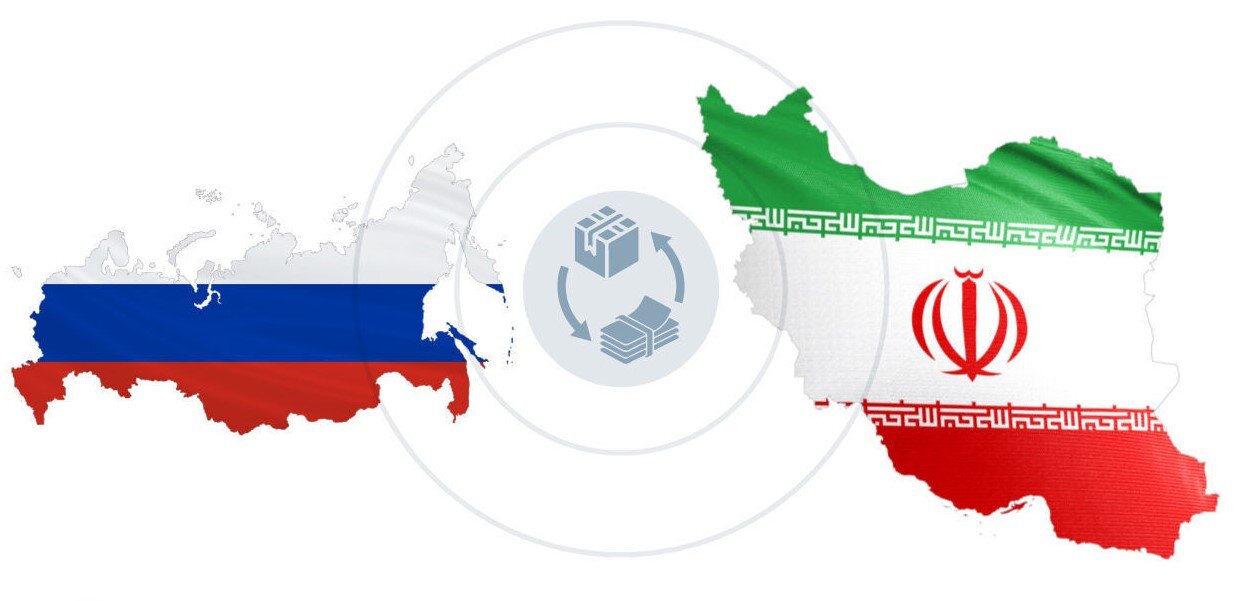Iran-Russia non-oil trade stands at $1.5b in 7 months
TEHRAN- The value of non-oil trade between Iran and Russia stood at $1.5 billion in the first seven months of the current Iranian calendar year (March 20-October 21), the former head of the Islamic Republic of Iran Customs Administration (IRICA) announced. Mohammad Rezvanifar said that Russia was the fifth top trade partner of Iran among


TEHRAN- The value of non-oil trade between Iran and Russia stood at $1.5 billion in the first seven months of the current Iranian calendar year (March 20-October 21), the former head of the Islamic Republic of Iran Customs Administration (IRICA) announced.
Mohammad Rezvanifar said that Russia was the fifth top trade partner of Iran among its neighbors in the mentioned seven-month period.
Iran and Russia have been taking serious steps to boost their mutual trade over the past few years.
In a ceremony on November 11, Russia’s Mir payment network and Iran’s Shetab payment system were connected, as the two countries are increasing their financial cooperation.
Addressing this ceremony, Central Bank of Iran Governor Mohammad-Reza Farzin mentioned integration of the two countries’ banking subsystems as a big step towards creating integrated economic cooperation in the region, completing the de-dollarization process and facilitating economic and tourism relations between Iran and Russia.
By connecting the national payment networks of the two countries, the borders of electronic payments will be removed and a new chapter will begin in the economic and cultural cooperation of the two nations, the official emphasized.
He said: “The project that we are witnessing its inauguration today, started with the aim of creating integration in the payment networks and facilitating financial transactions between the citizens of the two countries.”
Emphasizing that this project is divided into three phases and in each phase, an important step is taken towards the realization of the final goal, the CBI governor said: “The first phase of this project, which was put into operation at the end of September and will be unveiled today, provides the possibility of using bank cards of Iran, which are under Shetab network, in Russian ATMs for tourists. In this way, now Iranian tourists can easily receive ruble notes from Russian ATMs using the riyal balance of their Shetab cards.”
Farzin further emphasized that the next phases of this project will be unveiled soon with wider facilities and services.
In early July, the CBI governor said a monetary contract has been signed between Tehran and Moscow for carrying out bilateral trade exchanges.
Farzin told reporters that he and his Russian counterpart had a meeting in Saint Petersburg last Thursday where they finalized agreements already signed between the two countries.
During the meeting, the chief bankers of Iran and Russia also signed a memorandum of understanding (MOU) on joint measures to be taken by the two countries for the expansion of economic and monetary ties.
According to Farzin the new monetary contract enables Iran and Russia to trade in local currencies.
He added that based on agreements between the specialized delegations of the two countries, Iran’s Shetab banking system would link Russia’s MIR interbank system by the end of August.
The official said that the new scheme would allow Iranian nationals to take ruble from Russian ATMs using their Iranian banking cards.
“During the meeting, the two sides finalized the requirements to connect Russia’s Mir payment system to Iran’s Shetab and this project has entered the operational phase,” Farzin said.
He added that the scheme will further develop in the next phases to allow Russian nationals to use their banking cards in Iranian ATMs and will then enable using Iranian cards at the Russian poses.
“The second stage [involves the possibility of] paying with Russian citizens’ cards in Iran,” Farzin said, adding that in the third stage, Iranians will be able to pay with a Shetab card in Russian stores via an ordinary bank terminal.
In April 2024, the Iranian Foreign Ministry announced that the project to use Mir cards had entered the implementation stage. In May 2022, Russian Deputy Prime Minister Alexander Novak said that the countries were discussing how to connect the Mir and Shetab payment systems.
Iran and Russia have been taking serious steps to boost their mutual trade over the past few years.
In late January, Iran’s late President Ebrahim Raisi said that the Islamic Republic and Russia have reached an agreement to boost the trade between the two countries up to $10 billion.
“We agreed to remove trade barriers and boost the economic exchanges between the two countries. Currently, the level of mutual trade is not acceptable, so the two countries agreed to increase trade to $10 billion a year,” Raisi said on January 21, upon arrival to Tehran after a two-day visit to Moscow.
He also noted that the two sides also discussed monetary and banking issues during his talks with Russian officials.
The two countries also agreed to identify mutual agricultural capacities as well as suitable areas for the exchange of agricultural products in order to increase the level of trade in the agricultural sector, according to the official.
He went on to say that the Islamic Republic of Iran has very good capacities in the field of transit and transportation, saying: “During this visit, it was agreed to activate the north-south corridor. This transit route will make the time and distance of transiting goods from Russia and different northern countries to the southern regions much shorter.”
Meanwhile, during a meeting between Iran’s Minister of Finance and Economic Affairs Abdolnasser Hemmati and Russia’s Minister of Economic Development Maxim Reshetnikov on September 30, the two sides called for strengthening economic ties between the two countries.
Hemmati met and held talks with Reshetnikov on the sideline of the talks between high-ranking delegations of Iran and Russia at the time.
Referring to the increasing trade between Iran and the member countries of the Eurasian Economic Union, Reshetnikov expressed hope that this process will accelerate further.
During the meeting, the two sides discussed customs issues, Russian investments in the oil industry, the progress of the Rasht-Astara railway, the North-South Corridor, truckers’ insurance, trade currency settlement, strengthening the Eurasian Economic Union, and other economic issues between the two countries.
In the same day, Iranian President Masoud Pezeshkian said that an agreement to transform Iran into a regional transit and gas hub is a prime example of cooperation between Tehran and Moscow.
“We believe that if important joint projects between Iran and Russia are implemented, they will create significant capacities for both countries to counter cruel sanctions,” Pezeshkian said during a meeting with visiting Russian Prime Minister Mikhail Mishustin.
The president underscored that the Iran-Russia partnership not only serves the interests of both nations but will also promote sustainable development, economic growth and integration in the region.
Pezeshkian called for efforts from both sides to ensure the successful execution of the joint projects.
He pointed out that regional cooperation through international organizations like BRICS and the Shanghai Cooperation Organization (SCO) strengthens independent countries, including Iran, Russia, and China, in their efforts to resist the U.S. unilateralism.
In response, the Russian prime minister reiterated Russia’s desire to enhance and expand interactions with Iran, particularly in energy, industry, transportation, agriculture, healthcare, and cultural sectors.
MA
